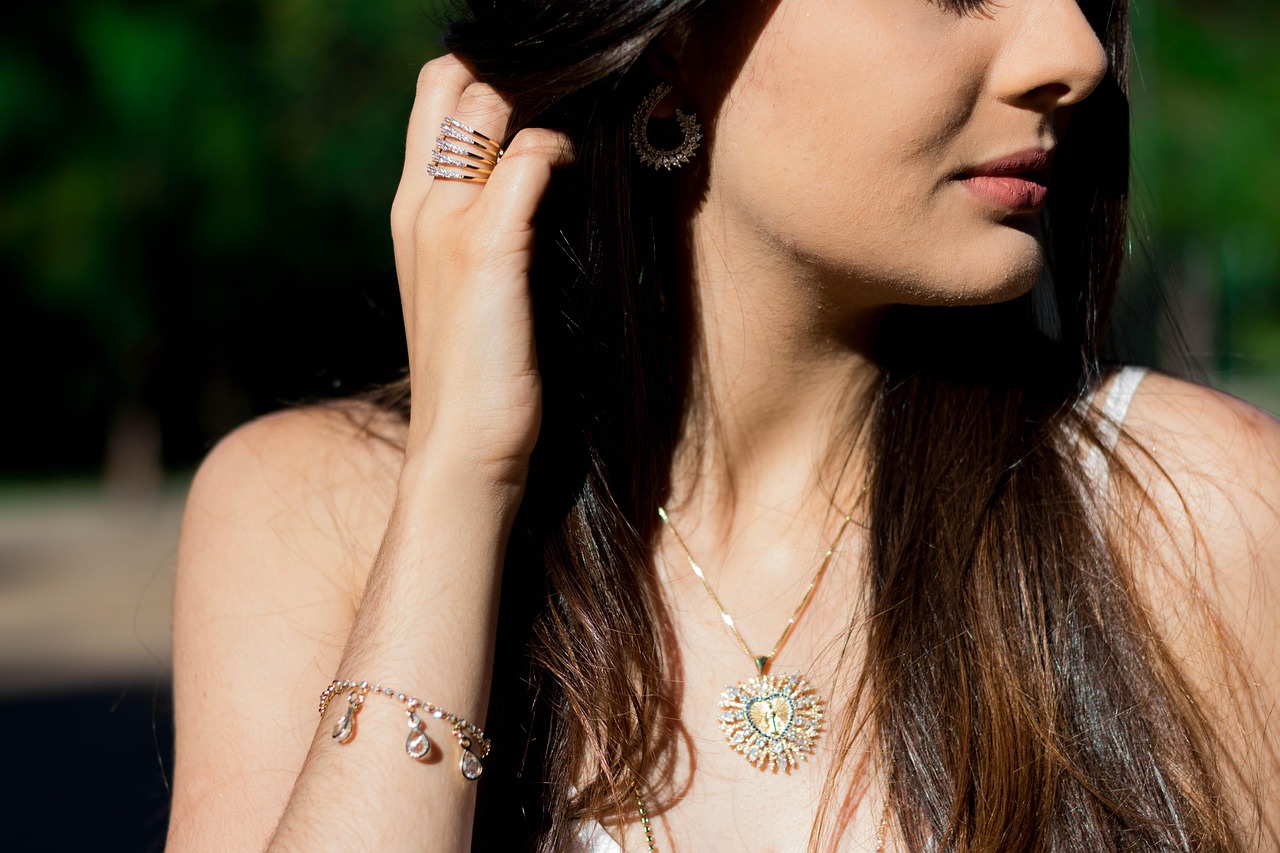This article delves into some of the most unique and culturally significant jewelry pieces from various regions across the globe. It highlights their history, craftsmanship, and the captivating stories they tell.
1. The Significance of Jewelry in Different Cultures
Jewelry has played a crucial role in various cultures, often symbolizing status, identity, and tradition. Understanding these cultural significances enhances appreciation for unique pieces worldwide.
2. Ancient Egyptian Jewelry: A Glimpse into History
Ancient Egyptian jewelry is renowned for its intricate designs and symbolism. It served not only as adornment but also as a means to connect with the divine and the afterlife.
3. Native American Jewelry: A Blend of Nature and Culture
Native American jewelry is characterized by its use of natural materials and intricate designs that reflect the culture’s connection to nature and spirituality.
4. Indian Jewelry: A Symbol of Wealth and Tradition
Indian jewelry is known for its vibrant colors and intricate designs, often symbolizing wealth, status, and cultural heritage, deeply intertwined with the country’s traditions.
5. Japanese Jewelry: Minimalism Meets Elegance
Japanese jewelry often embodies minimalism and elegance, reflecting the country’s aesthetic principles. It combines traditional craftsmanship with modern design elements.
6. African Tribal Jewelry: A Rich Tapestry of Culture
African tribal jewelry is vibrant and diverse, often reflecting the wearer’s tribe, status, and cultural heritage through bold designs and colors.
7. The Evolution of Jewelry Through the Ages
The history of jewelry reflects societal changes, evolving from simple adornments to complex pieces of art, showcasing the craftsmanship and cultural significance of different eras.
8. Sustainable and Ethical Jewelry: A Growing Trend
As awareness of environmental issues rises, sustainable and ethical jewelry is gaining popularity, focusing on responsible sourcing and production practices that respect both people and the planet.
9. Celebrity Influence on Jewelry Trends
Celebrities play a significant role in shaping jewelry trends, often showcasing unique pieces that inspire fans and influence market demand.
10. The Future of Jewelry: Technology and Innovation
The future of jewelry is being shaped by technology, with advancements in design, production, and marketing transforming how jewelry is created and consumed.
11. Caring for Unique Jewelry Pieces
Proper care and maintenance of unique jewelry pieces are essential to preserve their beauty and longevity, ensuring they remain cherished for generations.
12. Conclusion: The Timeless Appeal of Unique Jewelry
Unique jewelry pieces hold timeless appeal, reflecting cultural heritage, personal stories, and artistic expression. Their significance transcends time, making them treasured possessions for generations to come.
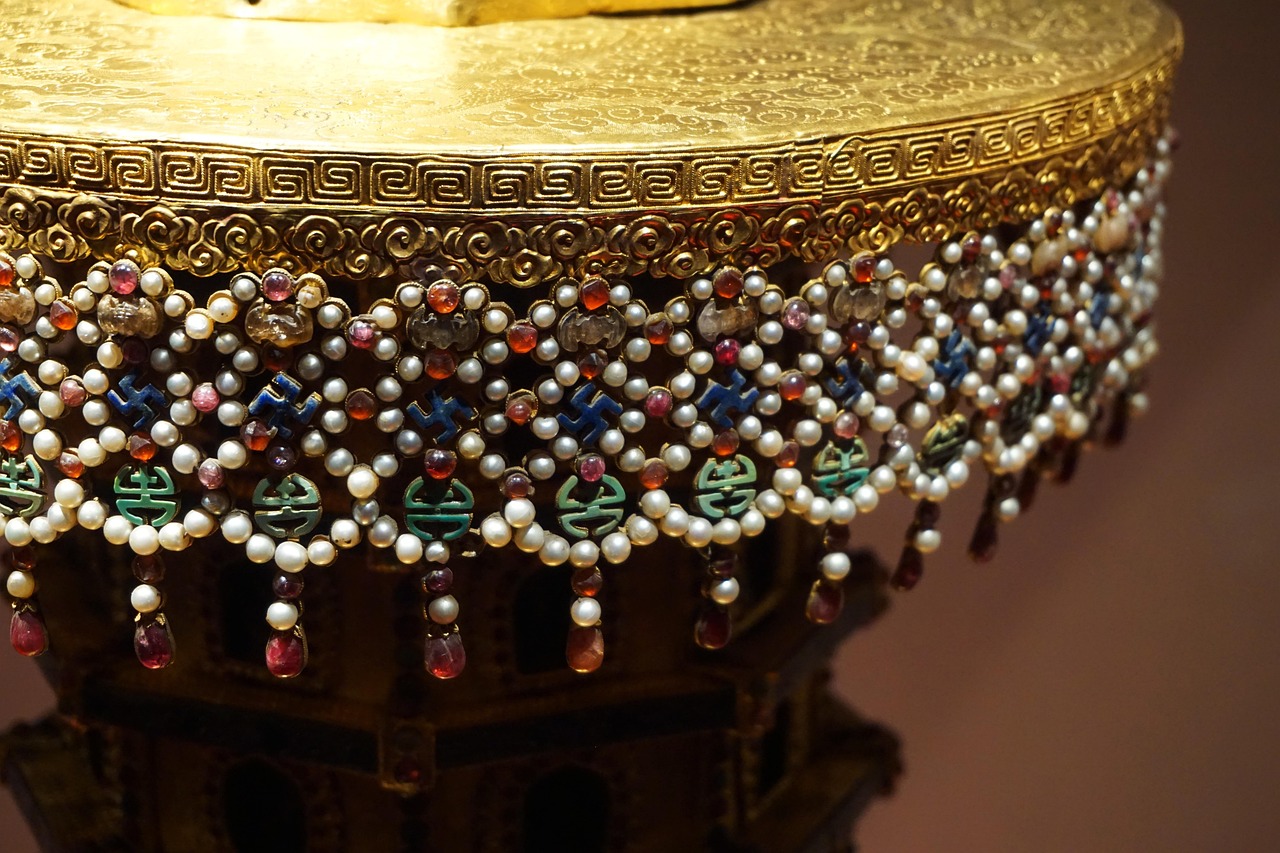
1. The Significance of Jewelry in Different Cultures
Jewelry serves as a profound reflection of cultural identity, status, and tradition across the globe. From ancient civilizations to modern societies, the significance of jewelry extends beyond mere adornment; it encapsulates the values, beliefs, and stories of the people who wear it. Understanding the cultural importance of jewelry can greatly enhance our appreciation for the unique pieces crafted in different regions.
Throughout history, jewelry has been used as a status symbol, showcasing wealth and power. In many cultures, specific materials such as gold, silver, and precious stones were reserved for the elite. For instance, in ancient Egypt, gold was not only a sign of wealth but also represented the divine, often used in tomb artifacts to accompany the deceased into the afterlife. Similarly, in India, elaborate jewelry worn during weddings signifies not just beauty but also the bride’s familial ties and social standing.
Moreover, jewelry often carries spiritual significance. In Native American cultures, turquoise is revered for its protective properties and is commonly used in traditional jewelry. This connection to nature and spirituality is reflected in the designs and materials chosen by artisans. In Africa, tribal jewelry often incorporates beads and symbols that represent the wearer’s tribe and cultural heritage, serving as a visual narrative of their identity.
Furthermore, the craftsmanship involved in jewelry making varies widely between cultures, showcasing unique techniques passed down through generations. For example, Indian jewelers employ intricate methods like Kundan and Meenakari, while Japanese artisans focus on minimalism and elegance, often drawing inspiration from nature.
In conclusion, the significance of jewelry in different cultures is multifaceted, encompassing elements of identity, status, and tradition. By exploring these cultural contexts, we can gain a deeper understanding and appreciation for the artistry and meaning behind unique jewelry pieces found around the world.

2. Ancient Egyptian Jewelry: A Glimpse into History
Ancient Egyptian jewelry is a fascinating subject that offers a glimpse into the rich history and culture of one of the world’s oldest civilizations. This jewelry was not merely decorative; it was imbued with profound symbolism and served various purposes in society, from signifying wealth to acting as a conduit to the divine.
The intricate designs of ancient Egyptian jewelry often featured precious metals like gold and silver, along with an array of gemstones such as turquoise, lapis lazuli, and carnelian. Each material was chosen not only for its beauty but also for its spiritual significance. For instance, gold was believed to represent the skin of the gods, symbolizing immortality and the eternal nature of the soul.
Moreover, jewelry played a crucial role in the afterlife beliefs of the ancient Egyptians. Many pieces were buried with the deceased, serving as a form of protection and a means to ensure a safe passage to the afterlife. The scarab beetle, often seen in jewelry, was a powerful symbol of rebirth and regeneration, reinforcing the belief in life after death.
In addition to their spiritual significance, ancient Egyptian jewelry also reflected the social hierarchy of the time. The more elaborate the piece, the higher the status of the wearer. Jewelry was worn by both men and women, with styles varying significantly based on social class and occasion.
- Materials Used: Gold, silver, and gemstones
- Symbolism: Immortality, protection, and rebirth
- Social Significance: Indicator of wealth and status
In conclusion, ancient Egyptian jewelry is a testament to the civilization’s rich cultural and spiritual heritage. Its intricate designs and profound meanings continue to captivate historians and enthusiasts alike, offering a unique window into the beliefs and values of a society that thrived thousands of years ago.
2.1 The Use of Gold in Egyptian Jewelry
Gold has always held a profound significance in various cultures, and in ancient Egypt, it was revered as the flesh of the gods. This divine association made gold a highly sought-after material for crafting jewelry, which played a crucial role in both everyday life and religious practices.
In ancient Egyptian society, jewelry was not merely an adornment but a representation of eternity and divine protection. The lustrous quality of gold symbolized the sun, a vital element in their belief system, and was thought to provide the wearer with a connection to the divine. This belief made gold jewelry a staple in burial practices, ensuring that the deceased would be protected and honored in the afterlife.
Gold jewelry was often intricately designed, showcasing the exceptional craftsmanship of ancient artisans. Techniques such as granulation and inlay were commonly employed, allowing for detailed patterns and designs that told stories of gods, nature, and the cosmos. Each piece of jewelry was unique, often adorned with precious stones like lapis lazuli and turquoise, which were believed to enhance the protective qualities of gold.
Moreover, gold jewelry served as a status symbol, reflecting wealth and power. The more elaborate the jewelry, the higher the status of the wearer. Pharaohs and nobility wore gold to signify their divine right to rule, while everyday citizens also adorned themselves with gold, albeit in simpler forms.
In conclusion, the use of gold in ancient Egyptian jewelry transcended mere decoration; it was a profound expression of cultural and religious beliefs. The durability and brilliance of gold not only represented eternity but also served as a bridge between the earthly realm and the divine, making it an essential element in the rich tapestry of ancient Egyptian life.
2.1.1 Famous Egyptian Jewelry Artifacts
When exploring the world of ancient Egyptian jewelry, one cannot overlook the stunning artifacts that have survived through the ages. Among these, Tutankhamun’s burial mask stands out as a symbol of the opulence and intricate craftsmanship characteristic of this ancient civilization. Crafted from gold and adorned with precious stones, this mask not only served as an adornment for the young pharaoh’s afterlife but also reflected the profound cultural beliefs surrounding beauty and immortality.
Jewelry in ancient Egypt was not merely decorative; it held significant symbolic meanings. Each piece was designed with intention, often incorporating motifs that represented protection, life, and rebirth. For instance, the ankh symbol, representing eternal life, frequently appeared in jewelry designs, showcasing the Egyptians’ reverence for the afterlife and their belief in the divine.
In addition to Tutankhamun’s burial mask, other famous artifacts like the golden scarab and intricate necklaces adorned with lapis lazuli and turquoise further exemplify the advanced techniques used by ancient artisans. The scarab, a symbol of regeneration, was often worn as an amulet, believed to provide protection and luck to its wearer.
Moreover, the techniques employed in creating these stunning pieces were remarkable for their time. Artisans utilized methods such as granulation and cloisonné, showcasing their exceptional skills and creativity. The combination of these techniques allowed for the creation of intricate patterns and designs, making each piece a unique work of art.
In conclusion, the jewelry artifacts from ancient Egypt, particularly those associated with Tutankhamun, offer a fascinating glimpse into the past. They not only highlight the artistic mastery of the time but also reflect the deep cultural significance that jewelry held in ancient Egyptian society. These treasures continue to captivate and inspire, reminding us of a civilization that valued beauty, craftsmanship, and the mysteries of the afterlife.
2.1.2 Techniques Used in Ancient Egyptian Jewelry Making
Techniques Used in Ancient Egyptian Jewelry Making
Ancient Egyptian jewelry making is a fascinating blend of artistry and technical skill, showcasing the ingenuity of artisans from thousands of years ago. Among the various techniques employed, granulation and cloisonné stand out as remarkable methods that highlight the sophistication of their craftsmanship.
- Granulation: This technique involves the creation of tiny beads or granules of metal that are fused onto a surface, forming intricate designs. Artisans would skillfully arrange these granules to create patterns that added depth and texture to the jewelry. The process required immense precision and patience, as each granule had to be meticulously placed and heated to achieve a seamless bond with the underlying metal.
- Cloisonné: Another prominent technique, cloisonné involves the use of thin metal strips to create compartments or “cloisons” that hold colored glass or gemstones. This method allowed for vibrant designs and intricate patterns, as artisans could fill each compartment with different materials, resulting in stunning visual effects. The combination of metals and stones not only enhanced the aesthetic appeal but also symbolized various aspects of Egyptian culture and beliefs.
Both techniques were not merely decorative; they carried significant symbolism and were often used in pieces intended for the pharaohs and the gods. Jewelry served as a means of spiritual connection, believed to protect the wearer in the afterlife and signify their status in society.
Moreover, the use of precious materials such as gold, lapis lazuli, and turquoise in conjunction with these techniques further exemplified the wealth and power of ancient Egyptians. Each piece of jewelry was crafted with intention, reflecting the rich cultural heritage and artistic legacy of the civilization.
In conclusion, the techniques of granulation and cloisonné not only highlight the advanced skills of ancient Egyptian artisans but also reveal the profound cultural significance embedded in their jewelry. These methods continue to inspire contemporary jewelers and serve as a testament to the enduring legacy of ancient craftsmanship.
2.2 Symbolism in Egyptian Jewelry
Jewelry in ancient Egypt was not merely a form of adornment; it was deeply intertwined with the culture’s spiritual beliefs and social practices. The use of symbols in Egyptian jewelry conveyed significant meanings, reflecting the values and beliefs of the society. Among the most prominent symbols were the ankh and the scarab, both of which represented vital concepts such as life, protection, and rebirth.
The ankh, often referred to as the “key of life,” was a symbol of eternal life and immortality. It represented the union of opposites, such as the male and female principles, and was frequently depicted in the hands of gods and goddesses, signifying their power to grant life. This symbol was commonly incorporated into jewelry pieces, allowing the wearer to carry a reminder of divine protection and the promise of an afterlife.
Another significant symbol, the scarab, was associated with the sun god Ra and the process of rebirth. Scarabs were believed to roll the sun across the sky, paralleling the cycle of life, death, and resurrection. Jewelry featuring scarab motifs was often worn as a protective amulet, intended to safeguard the wearer from harm and ensure a successful transition into the afterlife.
Moreover, the colors and materials used in Egyptian jewelry also held symbolic meanings. For instance, gold was viewed as the flesh of the gods, representing immortality and divine connection. The use of lapis lazuli, a deep blue stone, symbolized the heavens and was often used to signify royalty and the divine.
In summary, the symbolism in ancient Egyptian jewelry transcended mere decoration. Each piece told a story, embodying the wearer’s beliefs and aspirations. By understanding these symbols, we gain deeper insights into the rich tapestry of ancient Egyptian culture and its enduring legacy.

3. Native American Jewelry: A Blend of Nature and Culture
Native American jewelry is a profound expression of artistry and cultural heritage, intricately woven with the threads of nature and spirituality. Each piece tells a story, representing not just adornment but a deep connection to the land and traditions of the Native American people.
The use of natural materials such as silver, turquoise, and various gemstones is a hallmark of this jewelry. These materials are not only beautiful but also carry significant meanings. For instance, turquoise is often regarded as a sacred stone, believed to offer protection and bring good fortune. Its vibrant blue color is reminiscent of the sky and water, elements that are vital to life and spirituality in many Native cultures.
Moreover, the intricate designs found in Native American jewelry often reflect symbols and motifs that have been passed down through generations. Common themes include nature motifs like animals, plants, and celestial bodies, which are integral to the cultural narratives and spiritual beliefs of various tribes. Each design is meticulously crafted, showcasing the skill and dedication of the artisans.
| Material | Significance |
|---|---|
| Turquoise | Protection and good fortune |
| Silver | Symbol of wealth and status |
| Coral | Represents life and vitality |
In addition to the materials, the techniques used in crafting Native American jewelry vary widely among tribes. Techniques such as silversmithing, beadwork, and stone inlay are prevalent, each reflecting the unique artistic identity of the tribe. For example, the Navajo are renowned for their silverwork, while the Pueblo people are celebrated for their intricate beadwork.
In conclusion, Native American jewelry is not merely decorative; it is a vibrant tapestry of culture, history, and spirituality. Each piece serves as a testament to the enduring legacy of Native American artisans and their profound connection to nature.
3.1 The Role of Turquoise in Native American Jewelry
Turquoise is not just a beautiful gemstone; it holds a deep cultural significance within Native American traditions. Revered for centuries, turquoise is believed to embody the essence of the sky and water, serving as a powerful symbol of protection, healing, and good fortune. For many Native American tribes, this stone is considered sacred and is often incorporated into various forms of jewelry, including necklaces, bracelets, and earrings.
The spiritual importance of turquoise is reflected in its use during important rituals and ceremonies. It is often worn by warriors and shamans, who believe that it enhances their strength and offers spiritual guidance. The stone is thought to connect the wearer to the earth and the universe, promoting harmony and balance in their lives.
In addition to its spiritual properties, turquoise also serves as a symbol of identity among different tribes. Each tribe has its unique way of working with turquoise, resulting in distinct styles and patterns that reflect their cultural heritage. For example:
- Navajo Jewelry: Known for its intricate silverwork, Navajo artisans often set turquoise in ornate designs, showcasing their craftsmanship.
- Zuni Jewelry: Zuni jewelers are famous for their inlay work, where turquoise is combined with other stones to create stunning mosaic patterns.
- Hopis Jewelry: Hopi artists often utilize turquoise in their traditional overlay techniques, creating unique textures and designs.
The significance of turquoise extends beyond its aesthetic appeal; it is also a representation of the connection to nature. Many Native Americans believe that the stone carries the energy of the earth, promoting a sense of belonging and responsibility towards the environment. This belief is particularly evident in the way artisans source their materials, often favoring sustainable practices that honor the land.
In conclusion, turquoise is more than just a gemstone in Native American culture; it is a treasured symbol of protection, identity, and a deep connection to nature. Its enduring popularity in jewelry reflects not only its beauty but also the rich traditions and beliefs of Native American peoples.
3.2 Techniques and Styles in Native American Jewelry
Native American jewelry is a vibrant expression of cultural identity, showcasing a rich tapestry of techniques and styles that vary among different tribes. Each piece is not just an adornment but a reflection of history, spirituality, and the natural world.
Silversmithing is one of the most prominent techniques used in Native American jewelry. This craft was significantly influenced by European settlers, who introduced silver as a material. Native artisans quickly adapted, creating stunning pieces that often feature intricate designs and symbolic motifs. The use of silver is not merely aesthetic; it also carries deep cultural significance, representing purity and the connection to the earth.
Beadwork is another traditional technique that holds immense cultural value. Beads made from materials such as glass, shell, and stone are meticulously stitched together to create intricate patterns and designs. Each tribe has its unique style of beadwork, often incorporating colors and shapes that hold specific meanings. For example, the Lakota tribe is known for its vibrant use of color, while the Navajo often employs geometric designs.
Turquoise is a favored gemstone in Native American jewelry, revered for its beauty and believed protective qualities. The stone is often set in silver and used in various styles, from simple pendants to elaborate cuffs. The color of turquoise symbolizes the sky and water, both vital elements in Native American spirituality.
Different tribes also have distinct styles that reflect their heritage. For instance, the Navajo are famous for their heavy silverwork and intricate stone settings, while the Zuni are known for their inlay techniques, combining multiple stones to create stunning visual effects.
In conclusion, the techniques and styles in Native American jewelry are as diverse as the tribes themselves. Each piece tells a story, preserving the rich cultural heritage and artistic expression of Native American communities.

4. Indian Jewelry: A Symbol of Wealth and Tradition
Indian jewelry is celebrated worldwide for its vibrant colors and intricate designs, which often symbolize not only wealth and status but also the rich cultural heritage of India. This jewelry is deeply intertwined with the country’s traditions, reflecting centuries of craftsmanship and artistry.
Jewelry in India serves various purposes, from religious rituals to social status. It is common for families to pass down heirloom pieces, which carry stories and memories, making them priceless treasures. The significance of jewelry can be seen in its role during weddings and festivals, where it is worn as a mark of celebration and prosperity.
Bridal jewelry holds a special place in Indian culture. It is not just an accessory but a representation of the bride’s familial ties and social standing. Traditionally, brides are adorned with heavy gold jewelry, including necklaces, earrings, and bangles, often embellished with precious stones. This adornment signifies prosperity and is believed to bring good fortune to the couple.
India boasts a variety of traditional jewelry-making techniques that showcase the country’s rich artistic legacy. Techniques such as Kundan, where gemstones are set in gold foil, and Meenakari, which involves intricate enamel work, highlight the exceptional skills of Indian artisans. These methods not only enhance the aesthetic appeal but also reflect the cultural narratives embedded in each piece.
- Punjabi Jewelry: Known for its bold and elaborate designs, often featuring traditional motifs.
- South Indian Jewelry: Characterized by intricate temple jewelry, often depicting deities and religious symbols.
- Rajasthani Jewelry: Famous for its use of colorful gemstones and intricate silver work, reflecting the royal heritage of the region.
In summary, Indian jewelry is not merely ornamental; it is a profound expression of the country’s cultural identity. Each piece tells a story, representing the artistry of generations and the values held dear by the society. As such, it continues to be a cherished aspect of Indian heritage, celebrated both locally and globally.
4.1 The Importance of Bridal Jewelry in India
Bridal jewelry in India holds a profound significance, representing not just adornment but a rich tapestry of culture, tradition, and familial bonds. In Indian weddings, jewelry is a crucial element that enhances the bride’s beauty while embodying the values and heritage of her family.
Traditionally, bridal jewelry is crafted from precious metals such as gold and silver, often embellished with exquisite gemstones like diamonds, emeralds, and rubies. Each piece is meticulously designed to reflect the bride’s personal style and the cultural heritage of her community. For instance, Kundan and Polki jewelry, known for their intricate settings and uncut stones, are highly prized in many regions of India.
Moreover, bridal jewelry serves as a symbol of prosperity and good fortune. It is believed that the more elaborate the jewelry, the greater the blessings for the couple’s future. This belief is deeply rooted in Indian culture, where jewelry is often passed down through generations, signifying the continuity of family traditions and values.
In addition to its aesthetic appeal, bridal jewelry plays a significant role in various wedding rituals. For example, the mangalsutra, a sacred necklace worn by brides, symbolizes their marital status and the union of two families. Similarly, nath (nose rings) and maang tikka (forehead jewelry) are essential components that complete the bridal look, each carrying its own cultural significance.
As weddings evolve, contemporary trends have also influenced bridal jewelry. Many brides now opt for fusion styles, combining traditional pieces with modern designs, reflecting their unique personalities while honoring their heritage. This blend of old and new not only enhances the visual appeal but also ensures that the jewelry remains relevant in today’s fashion landscape.
In conclusion, bridal jewelry in India is much more than mere decoration; it is a celebration of tradition, a symbol of familial ties, and a reflection of personal identity. Its importance in weddings underscores the deep cultural values that continue to shape Indian society.
4.2 Traditional Techniques in Indian Jewelry Making
Traditional Techniques in Indian Jewelry Making are a testament to the rich cultural heritage and artistic prowess of Indian artisans. Among the most celebrated techniques are Kundan and Meenakari, both of which highlight the intricate craftsmanship that has been passed down through generations.
Kundan is a traditional Indian gem-setting technique that involves setting gemstones in gold foil. This method allows for a stunning array of colors and designs, making each piece unique. The process is labor-intensive, requiring skilled artisans to meticulously arrange and secure each gemstone, often resulting in breathtakingly elaborate jewelry pieces. Kundan jewelry often features a combination of precious and semi-precious stones, enhancing its visual appeal and value.
Meenakari, on the other hand, is the art of enameling, where vibrant colors are applied to the surface of metal, typically gold or silver. This technique adds depth and character to the jewelry, often depicting intricate designs inspired by nature, mythology, and traditional motifs. The combination of Kundan and Meenakari techniques results in jewelry that not only dazzles the eye but also tells a story, reflecting the cultural and artistic legacy of India.
| Technique | Description | Materials Used |
|---|---|---|
| Kundan | Gem-setting technique using gold foil | Gold, precious and semi-precious stones |
| Meenakari | Enameling technique with vibrant colors | Gold, silver, colored enamel |
The significance of these techniques extends beyond aesthetics; they embody the traditions, beliefs, and values of Indian culture. Each piece of jewelry serves as a symbol of heritage, often worn during important ceremonies and celebrations, such as weddings and festivals. By embracing these traditional methods, contemporary jewelers continue to honor the past while innovating for the future, ensuring that the legacy of Indian jewelry making remains vibrant and relevant.
In conclusion, the traditional techniques of Kundan and Meenakari are not just methods of adornment; they are a celebration of India’s rich artistic legacy, showcasing the skill and creativity of artisans who have dedicated their lives to this beautiful craft.

5. Japanese Jewelry: Minimalism Meets Elegance
Japanese jewelry is a beautiful reflection of the country’s rich cultural heritage, characterized by its minimalism and elegance. This unique style is deeply rooted in Japan’s aesthetic principles, which prioritize simplicity, functionality, and the beauty of nature. The fusion of traditional craftsmanship with modern design elements creates pieces that are not only visually stunning but also carry significant meaning.
In Japanese jewelry design, nature plays a pivotal role. Many pieces feature motifs inspired by landscapes, flora, and fauna, symbolizing harmony and balance. For instance, the delicate cherry blossom is a popular motif, representing the transient beauty of life. This connection to nature is not just aesthetic; it also reflects the Japanese philosophy of Wabi-Sabi, which finds beauty in imperfection and impermanence.
Modern Japanese jewelry designers are increasingly blending traditional techniques with contemporary styles, creating unique pieces that appeal to global audiences while honoring their cultural heritage. Techniques such as mokume-gane, a metalworking procedure that creates a wood grain effect, are being incorporated into modern designs. This innovative approach not only preserves traditional craftsmanship but also introduces new textures and forms that resonate with today’s consumers.
Minimalism is a defining characteristic of Japanese jewelry. The use of clean lines and subtle colors allows the beauty of the materials to shine through without unnecessary embellishments. This approach encourages wearers to appreciate the simplicity and elegance of each piece, making them versatile for various occasions.
Each piece of Japanese jewelry often carries deep cultural significance and symbolism. For example, kintsugi, the art of repairing broken pottery with gold, is reflected in jewelry designs that celebrate imperfections and the story behind each piece. This philosophy not only enhances the aesthetic but also imparts a sense of history and meaning, making Japanese jewelry truly unique.
In conclusion, Japanese jewelry stands as a testament to the country’s rich cultural heritage, seamlessly blending tradition with modernity. Its emphasis on minimalism and elegance not only resonates with the aesthetic values of Japan but also appeals to a global audience seeking beauty in simplicity.
5.1 The Influence of Nature in Japanese Jewelry
The Influence of Nature in Japanese Jewelry is a captivating aspect of the country’s rich artistic heritage. Japanese jewelry design is deeply intertwined with the natural world, drawing inspiration from its breathtaking landscapes, diverse flora, and unique fauna. This connection to nature is not merely aesthetic; it embodies a profound philosophy that emphasizes harmony and balance in both art and life.
In Japan, nature is revered, and this reverence is reflected in jewelry pieces that often feature motifs such as cherry blossoms, waves, and mountains. Each of these elements carries significant meaning. For instance, the cherry blossom, or sakura, symbolizes the transient beauty of life, while waves represent strength and resilience. These motifs are skillfully incorporated into designs, showcasing the artisans’ ability to merge traditional craftsmanship with natural themes.
| Motif | Symbolism |
|---|---|
| Cherry Blossom | Transience and beauty |
| Waves | Strength and resilience |
| Mountains | Stability and permanence |
Moreover, the use of natural materials like pearls, wood, and stone further emphasizes this connection. Artisans often select materials that resonate with the natural environment, ensuring that each piece tells a story of its origin. This practice not only honors the earth but also aligns with the modern trend of sustainability in jewelry making.
Japanese jewelry also embraces the concept of Wabi-Sabi, which celebrates imperfection and the beauty of natural aging. This philosophy encourages designers to create pieces that reflect the uniqueness of each material, resulting in jewelry that is as much about the journey of creation as it is about the final product.
In conclusion, the influence of nature in Japanese jewelry design is a beautiful testament to the country’s cultural values. By intertwining natural elements with artistic expression, Japanese artisans create pieces that resonate with both beauty and meaning, inviting wearers to appreciate the delicate balance of life.
5.2 Contemporary Trends in Japanese Jewelry
Modern Japanese jewelry designers are redefining the landscape of adornment by seamlessly blending traditional techniques with contemporary aesthetics. This fusion not only creates visually stunning pieces but also ensures that the rich cultural heritage of Japan is honored and preserved.
In recent years, there has been a noticeable shift towards incorporating minimalism and natural elements into jewelry design. Many designers draw inspiration from Japan’s breathtaking landscapes, utilizing materials that reflect the beauty of nature. For instance, pieces may feature handcrafted silver and gold, often combined with semi-precious stones that echo the colors of the seasons.
Furthermore, the influence of traditional Japanese crafts, such as kintsugi—the art of repairing broken pottery with gold—has made its way into jewelry. This technique symbolizes resilience and beauty in imperfection, encouraging wearers to embrace their own stories and journeys. Jewelry pieces that incorporate this philosophy become not just adornments but also personal narratives.
Another significant trend is the use of sustainable materials and ethical practices in production. As global awareness of environmental issues rises, many Japanese designers are committed to sourcing materials responsibly. This movement resonates with a growing number of consumers who prioritize sustainability, making eco-friendly jewelry a sought-after choice.
Moreover, the integration of technology in jewelry design has opened new avenues for creativity. Techniques such as 3D printing allow for intricate and customizable designs that were once unimaginable. This innovation is particularly appealing to a younger audience, eager for unique pieces that reflect their individuality.
In summary, contemporary Japanese jewelry is a vibrant tapestry of tradition and innovation. By honoring their heritage while embracing modern design principles, Japanese jewelry designers are creating pieces that not only appeal to global audiences but also tell profound stories of culture and craftsmanship.

6. African Tribal Jewelry: A Rich Tapestry of Culture
African tribal jewelry is a stunning representation of the continent’s rich cultural heritage, showcasing a variety of styles that are both vibrant and diverse. Each piece of jewelry is often a reflection of the wearer’s tribe, social status, and personal identity. The use of bold designs and colors not only enhances the aesthetic appeal but also serves a deeper purpose in terms of cultural expression.
The intricate craftsmanship involved in creating these jewelry pieces is a testament to the skills passed down through generations. Artisans utilize a range of materials, including beads, metals, shells, and natural fibers, to create unique adornments that tell stories of their origins. For instance, beads play a significant role in many African cultures, often made from glass, wood, or bone. These beads are not merely decorative; they carry symbolic meanings and are used to convey messages about the wearer’s identity, marital status, and tribal affiliation.
| Material | Significance |
|---|---|
| Beads | Symbol of wealth and status |
| Gold | Represents prosperity and power |
| Shells | Used in rituals and ceremonies |
Moreover, African tribal jewelry often plays a crucial role in rituals and ceremonies, marking important life events such as births, marriages, and initiations. These pieces are not just ornaments; they serve as vital components of cultural practices and social gatherings. For example, during traditional ceremonies, specific jewelry is worn to signify a person’s role and status within the community.
In conclusion, African tribal jewelry is more than just a collection of beautiful items; it is a rich tapestry of culture that encapsulates the history, beliefs, and social structures of various tribes across the continent. The bold designs and vibrant colors reflect a deep connection to identity and community, making each piece a significant artifact of cultural heritage.
6.1 The Role of Beads in African Jewelry
Beads are not merely decorative elements in African jewelry; they are a vibrant expression of the continent’s rich cultural heritage. Often crafted from an array of materials such as glass, wood, and bone, each bead tells a unique story, reflecting the traditions and values of the various tribes from which they originate.
Historically, beads have served multiple purposes in African societies. They are used in ceremonies, rituals, and as symbols of status and identity. For instance, certain colors and patterns can signify different meanings, such as fertility, wealth, or social standing. Beads are often exchanged as gifts during significant life events, reinforcing social bonds and cultural ties.
| Material | Significance |
|---|---|
| Glass | Symbol of wealth and trade, often imported from Europe or made locally. |
| Wood | Represents a connection to nature and spirituality, often carved with intricate designs. |
| Bone | Used in ancestral rituals, symbolizing a link to the past and the spirits of ancestors. |
In addition to their cultural significance, the craftsmanship involved in bead-making is remarkable. Artisans often use traditional techniques passed down through generations, ensuring that each piece is not only beautiful but also steeped in history and tradition. The process of creating beads can involve methods such as hand-blowing glass or carving wood, showcasing the skill and dedication of the artisans.
Moreover, the use of beads in African jewelry has evolved over time. While traditional designs remain popular, contemporary artists are experimenting with new styles and materials, merging modern aesthetics with traditional craftsmanship. This evolution reflects the dynamic nature of African cultures, where tradition and innovation coexist harmoniously.
In conclusion, beads play a crucial role in African jewelry, serving as a bridge between the past and present. They encapsulate the essence of cultural identity and community, making each piece a treasured artifact that tells a story of its own.
6.2 Symbolism and Meaning Behind African Jewelry
Jewelry in African cultures is not merely decorative; it is a profound expression of identity, spirituality, and social status. Each piece carries significant symbolism and meaning, often intertwined with the cultural narratives of the tribes that create them.
Rituals and Ceremonies: In many African societies, jewelry is integral to rituals and ceremonies, marking important life events such as births, marriages, and initiations. For instance, during a wedding ceremony, the bride may wear specific jewelry that signifies her transition into a new role, symbolizing fertility and prosperity.
Materials and Craftsmanship: The materials used in African jewelry often reflect the environment and resources available to a tribe. Common materials include beads, metals, shells, and stones. Each material has its own significance; for example, beads can symbolize wealth and status, while metals like gold and silver are often reserved for ceremonial pieces.
Colors and Patterns: The colors and patterns used in African jewelry are also rich in meaning. Bright colors may represent joy and celebration, while darker hues can signify mourning or remembrance. Patterns often tell stories or convey messages, serving as a form of communication among the community.
Spiritual Connections: Many tribes believe that jewelry can provide spiritual protection. Certain symbols, such as the Adinkra symbols of the Akan people, are incorporated into jewelry designs to convey messages of wisdom and strength, serving as a reminder of cultural values and beliefs.
Conclusion: The symbolism and meaning behind African jewelry are deeply rooted in the cultural fabric of the continent. Each piece is a testament to the rich history and traditions of its people, making African jewelry not just an accessory, but a profound narrative of identity and heritage.
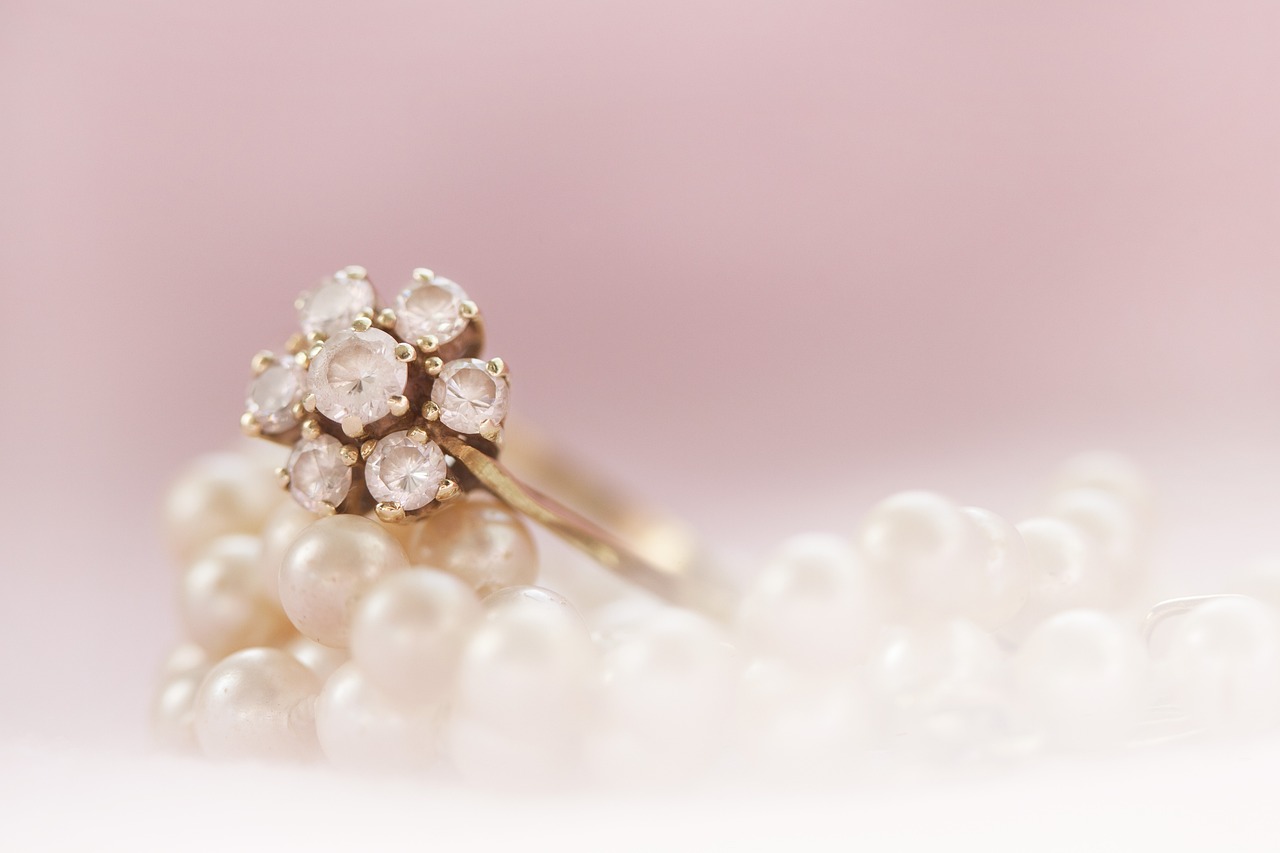
7. The Evolution of Jewelry Through the Ages
The Evolution of Jewelry Through the Ages showcases the remarkable journey of adornments that have transcended mere decoration to become significant cultural artifacts. Jewelry has evolved alongside human civilization, reflecting changes in society, technology, and artistry.
The history of jewelry is a fascinating narrative of cultural evolution. Initially, jewelry served as simple adornments, often made from natural materials such as shells, stones, and bones. These primitive pieces held personal significance, often linked to tribal identity or spiritual beliefs. As societies advanced, so did their craftsmanship and the complexity of their jewelry.
1. The Role of Jewelry in Ancient Civilizations
- Egyptians: In ancient Egypt, jewelry was not just decorative; it was imbued with spiritual significance. Gold, believed to embody the flesh of the gods, was used extensively, symbolizing immortality and divine favor.
- Greeks and Romans: The Greeks and Romans introduced intricate designs and gemstones, elevating jewelry to an art form. Pieces often depicted mythological themes and showcased the wearer’s status.
2. The Middle Ages to the Renaissance
During the Middle Ages, jewelry became a symbol of wealth and power. Nobility adorned themselves with elaborate pieces, often featuring religious motifs. The Renaissance marked a rebirth in artistic expression, with jewelers experimenting with new techniques and materials, leading to more personalized and ornate designs.
3. The Industrial Revolution and Modern Era
The Industrial Revolution revolutionized jewelry production, making it accessible to the masses. This era saw the rise of costume jewelry, which allowed for creativity without the burden of cost. Today, jewelry continues to evolve, blending traditional craftsmanship with modern technology, such as 3D printing and sustainable practices.
Conclusion: The evolution of jewelry is a testament to human creativity and adaptability. From ancient symbols of spirituality to modern expressions of individuality, jewelry remains a powerful reflection of cultural heritage and personal identity.
7.1 Jewelry in the Renaissance: A New Era of Design
The Renaissance period, spanning from the 14th to the 17th century, was a time of profound transformation in art, culture, and society. Among the many fields that experienced a revival, jewelry design emerged as a significant area of innovation and creativity. This era marked a dramatic shift in the approach to jewelry making, characterized by a newfound emphasis on intricate details, the use of gemstones, and innovative techniques that not only showcased artistic skill but also highlighted the wealth and power of the elite.
During the Renaissance, jewelers began to move away from the simpler, more austere designs of the medieval period. Instead, they embraced ornate embellishments and complex motifs that reflected the era’s fascination with nature, mythology, and humanism. The incorporation of colorful gemstones became a hallmark of Renaissance jewelry, with pieces often adorned with diamonds, rubies, emeralds, and sapphires. These gemstones were not merely decorative; they symbolized status and power, often worn by nobility and wealthy merchants to display their affluence.
Moreover, innovative techniques such as enameling, filigree, and granulation were perfected during this time. These methods allowed artisans to create more delicate and detailed designs, which became increasingly popular. The use of gold as a primary material also flourished, with jewelers employing various techniques to enhance its luster and durability, making it a preferred choice for high-end pieces.
The rise of portraiture and the human figure in art during the Renaissance also influenced jewelry design. Many pieces were crafted to include miniature portraits or cameos, often depicting loved ones or significant figures, thus personalizing the jewelry and adding emotional depth. This era not only revolutionized the aesthetics of jewelry but also paved the way for future innovations in the field.
In conclusion, the Renaissance was a pivotal time for jewelry design, marking a shift towards greater complexity and artistry. The emphasis on intricate craftsmanship and the use of luxurious materials laid the foundation for modern jewelry design, making it a significant chapter in the history of adornment.
7.2 Modern Jewelry Trends: A Fusion of Styles
Modern Jewelry Trends: A Fusion of Styles
In today’s ever-evolving fashion landscape, modern jewelry trends have emerged as a captivating blend of various cultural influences and innovative materials. This fusion reflects a globalized world where traditional craftsmanship meets contemporary design, resulting in unique pieces that resonate with diverse audiences.
The integration of different styles and materials has led to the creation of jewelry that not only serves as adornment but also tells a story. For instance, many designers are now incorporating eco-friendly materials into their collections, aligning with the growing demand for sustainability in fashion. This trend not only addresses environmental concerns but also appeals to a conscious consumer base.
Furthermore, the rise of artisan craftsmanship has brought a renewed appreciation for handmade jewelry. Consumers are increasingly seeking out pieces that reflect individuality and authenticity, often opting for items that showcase intricate techniques passed down through generations. This desire for uniqueness is evident in the popularity of bespoke jewelry, where customers can collaborate with artisans to create one-of-a-kind designs.
Another significant trend is the use of mixed media in jewelry design. Designers are experimenting with combining metals, gemstones, and unconventional materials such as wood or resin. This approach not only enhances the aesthetic appeal but also allows for greater creativity and expression in jewelry making.
Moreover, cultural motifs and symbols are being reinterpreted in modern jewelry, creating a dialogue between the past and the present. For example, traditional patterns from indigenous cultures are being incorporated into contemporary designs, fostering a sense of connection and respect for heritage.
In conclusion, modern jewelry trends represent a dynamic interplay of styles and influences. As designers continue to push boundaries and explore new materials, the world of jewelry remains an exciting realm of creativity and self-expression. This ongoing evolution ensures that jewelry will always hold a special place in our lives, reflecting not only personal style but also cultural narratives.

8. Sustainable and Ethical Jewelry: A Growing Trend
Sustainable and ethical jewelry is becoming increasingly significant in today’s world, as more consumers are becoming aware of the impact their purchasing decisions have on the environment and society. This growing trend emphasizes the importance of responsible sourcing and production practices that respect both people and the planet.
In recent years, there has been a noticeable shift towards jewelry that not only looks beautiful but also carries a story of ethical integrity. Many brands are now prioritizing materials that are sourced responsibly, ensuring that they do not contribute to environmental degradation or exploitative labor practices.
Ethical sourcing is crucial in the jewelry industry as it involves acquiring materials in a way that is environmentally sustainable and socially responsible. This means that gemstones, metals, and other materials are obtained from suppliers who adhere to fair labor practices and environmental regulations. Consumers are increasingly seeking out brands that are transparent about their sourcing methods, as this aligns with their values of conscious consumerism.
Innovative designers are exploring alternative materials such as recycled metals and lab-grown gemstones, which significantly reduce the environmental impact of traditional mining. Techniques like 3D printing are also being utilized to create unique designs with minimal waste. These advancements not only cater to the aesthetic desires of consumers but also reflect a commitment to sustainability.
To further assure consumers of the ethicality of their purchases, various certifications and standards have emerged in the jewelry industry. Organizations like the Responsible Jewelry Council and the Fair Trade Jewelry Association provide guidelines and certifications that help consumers identify brands committed to ethical practices.
As the demand for sustainable and ethical jewelry continues to rise, it is clear that consumers are not just looking for beautiful pieces but also for those that contribute positively to the world. This trend represents a significant shift in the jewelry market, where responsibility and style go hand in hand.
In conclusion, the movement towards sustainable and ethical jewelry is not just a passing trend; it is a reflection of a broader cultural shift towards mindfulness and responsibility in consumer behavior. As awareness of these issues grows, so too does the impact of ethical jewelry on the industry as a whole.
8.1 The Importance of Ethical Sourcing
In today’s world, the concept of ethical sourcing has gained significant traction, especially within the jewelry industry. Consumers are increasingly aware of the impact their purchases have on the environment and society. Ethical sourcing ensures that materials used in jewelry are obtained responsibly, supporting fair labor practices and minimizing environmental impact. This approach not only appeals to conscious consumers but also promotes a more sustainable future.
The importance of ethical sourcing can be broken down into several key areas:
- Support for Fair Labor Practices: Ethical sourcing means that workers involved in the extraction and production of materials are treated fairly and paid just wages. This is crucial in regions where labor exploitation is prevalent.
- Environmental Responsibility: By choosing ethically sourced materials, jewelers can reduce their environmental footprint. This includes minimizing habitat destruction and pollution, which are often associated with mining practices.
- Transparency in Supply Chains: Ethical sourcing promotes transparency, allowing consumers to know where their materials come from and the conditions under which they were produced. This builds trust between brands and consumers.
- Preservation of Cultural Heritage: Many ethically sourced materials come from indigenous communities, and supporting these sources helps preserve their cultural heritage and craftsmanship.
Moreover, the rise of social media and online platforms has empowered consumers to demand more from brands. They are not just looking for beautiful jewelry; they want to ensure that their purchases align with their values. This shift is prompting many jewelry designers to adopt sustainable practices and to highlight their ethical sourcing in marketing strategies.
In conclusion, ethical sourcing is more than just a trend; it is a necessary evolution in the jewelry industry. By prioritizing responsible practices, we can contribute to a more equitable and sustainable world, making conscious choices that resonate with our values.
8.2 Innovations in Sustainable Jewelry Design
Innovative designers are increasingly turning their attention to sustainable practices within the jewelry industry. By exploring alternative materials and eco-friendly production methods, these creators are not only crafting beautiful pieces but also aligning their work with the values of sustainability and ethical consumerism.
The shift towards sustainability in jewelry design is driven by a growing awareness of environmental issues. Designers are now utilizing materials such as recycled metals, lab-grown gemstones, and biodegradable materials to minimize their ecological footprint. This transition not only reduces waste but also promotes a more responsible approach to sourcing materials.
Moreover, innovative techniques such as 3D printing and upcycling are becoming increasingly popular. 3D printing allows for precise and intricate designs while reducing material waste, enabling designers to create unique pieces that are both beautiful and sustainable. Upcycling, on the other hand, involves repurposing old jewelry or materials into new, fashionable items, giving them a second life and reducing the demand for new resources.
In addition to materials and production methods, many designers are also focusing on the transparency of their supply chains. By providing consumers with information about where and how their jewelry is made, they are fostering a deeper connection between the buyer and the product. This transparency not only builds trust but also encourages consumers to make more informed and responsible purchasing decisions.
As the demand for sustainable jewelry increases, it is clear that the industry is evolving. Consumers are seeking pieces that reflect their values, and designers are responding with creativity and innovation. The future of jewelry design looks bright, with a focus on sustainability paving the way for a more ethical and environmentally conscious market.
In conclusion, the innovations in sustainable jewelry design represent a significant shift in the industry. By embracing alternative materials and eco-friendly practices, designers are not only creating stunning pieces but also contributing to a more sustainable future.
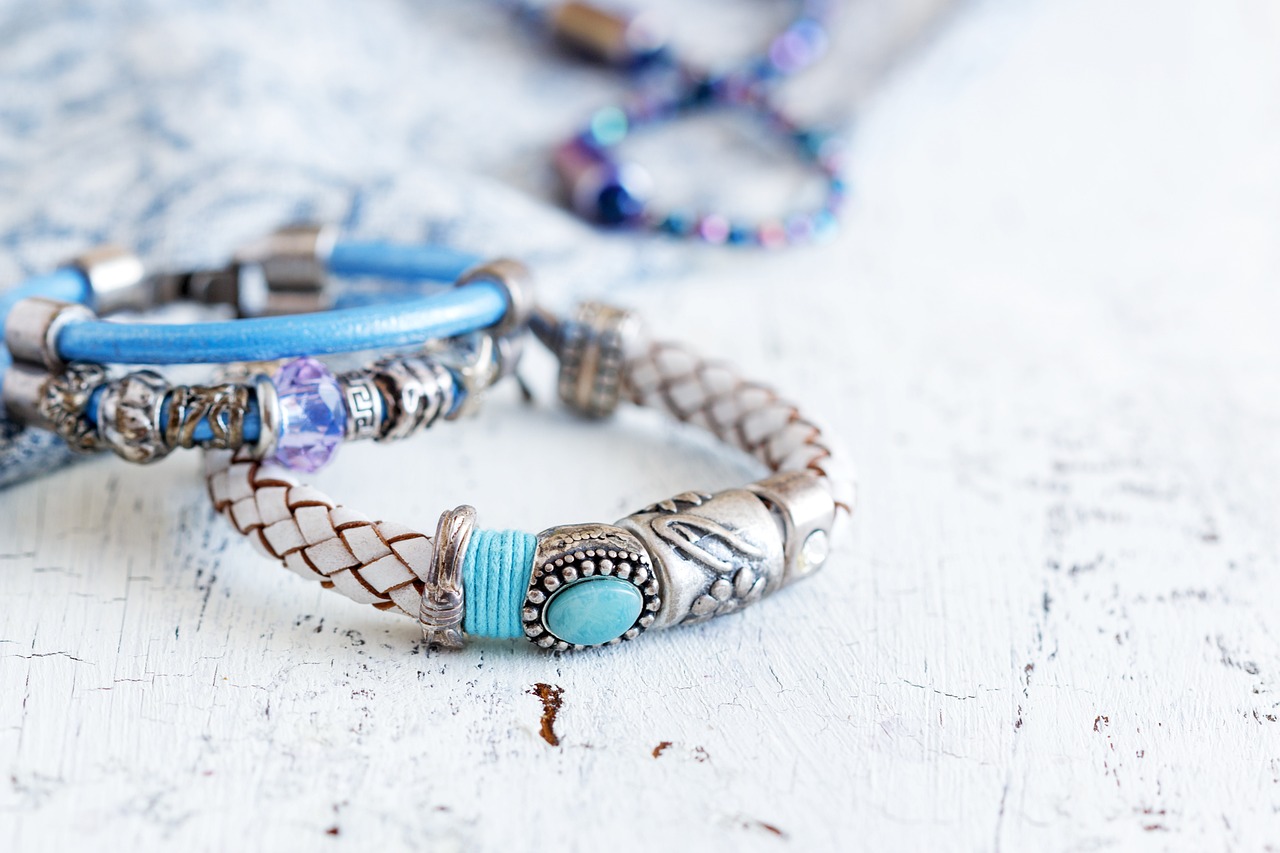
9. Celebrity Influence on Jewelry Trends
Celebrity Influence on Jewelry Trends has become an undeniable force in the fashion industry. Celebrities, with their vast platforms and influence, often set the tone for what is considered fashionable and desirable. Their choices in jewelry not only reflect personal style but also shape market demand and inspire fans around the globe.
From red carpet appearances to casual outings, celebrities showcase a variety of unique jewelry pieces that catch the eyes of fashion enthusiasts. These moments are more than just displays of wealth; they often highlight cultural significance and artistic craftsmanship. For instance, when a star wears a vintage piece or a handcrafted item from a lesser-known designer, it can lead to a resurgence in interest for that style or brand.
- Social Media Impact: Platforms like Instagram and TikTok allow celebrities to share their jewelry choices instantly, reaching millions of followers. This has led to trends emerging overnight, with fans eager to replicate their favorite stars’ looks.
- Red Carpet Events: Major events such as the Oscars or Met Gala are pivotal in showcasing extravagant and innovative jewelry designs. These occasions often set the stage for upcoming trends.
- Collaborations: Many celebrities collaborate with jewelry designers to create exclusive collections. These partnerships often blend personal style with artistic vision, resulting in unique pieces that attract significant attention.
Moreover, the influence of celebrities extends beyond just trends; it also raises awareness for ethical and sustainable practices in the jewelry industry. As more stars advocate for responsible sourcing and eco-friendly designs, fans are encouraged to consider the impact of their purchases.
In conclusion, the role of celebrities in shaping jewelry trends is multifaceted. Their influence not only drives market demand but also promotes cultural appreciation and sustainability. As fans look to their favorite stars for inspiration, the world of jewelry continues to evolve, reflecting both personal expression and broader societal values.
9.1 Iconic Celebrity Jewelry Moments
Iconic Celebrity Jewelry Moments have the power to captivate audiences and influence trends in the jewelry industry. From dazzling red carpet appearances to striking social media posts, these moments often highlight unique pieces that become synonymous with the stars who wear them. The interplay between celebrity culture and jewelry design has led to a significant rise in the popularity of specific styles and designers.
For instance, when a celebrity adorns themselves with a statement necklace or a pair of exquisite earrings, it can spark a surge in demand for similar pieces. The visibility provided by these high-profile appearances not only elevates the designer’s brand but also sets off a ripple effect within the fashion community. Fans and fashion enthusiasts alike are inspired to emulate their favorite stars, leading to increased sales and popularity for the showcased pieces.
One notable example is Jennifer Lopez and her iconic green Versace dress at the 2000 Grammy Awards, which was complemented by stunning emerald jewelry. This moment not only defined a fashion era but also reignited interest in emeralds, showcasing how celebrity moments can influence gemstone trends.
Moreover, social media platforms have transformed the way jewelry is marketed and consumed. Celebrities often share their jewelry choices on platforms like Instagram, where a single post can reach millions. This direct interaction with fans allows for a more personal connection, making it easier for followers to seek out the same pieces. For instance, Kylie Jenner frequently shares her love for lavish diamond pieces, which has led to a surge in demand for similar designs among her followers.
In conclusion, the relationship between celebrities and jewelry is a dynamic one, where iconic moments can significantly influence trends and designer popularity. As audiences continue to be captivated by these dazzling displays, the impact on the jewelry market remains profound and ever-evolving.
9.2 Collaborations Between Celebrities and Jewelry Designers
Collaborations between celebrities and jewelry designers have become a significant trend in the fashion industry, leading to the creation of exclusive collections that capture the essence of both the celebrity’s personal style and the designer’s innovative vision. These partnerships not only attract media attention but also drive sales, as fans are eager to emulate their favorite stars.
One of the most notable aspects of these collaborations is the unique blend of artistic expression and marketability. Celebrities often bring their personal stories and aesthetic preferences into the design process, resulting in pieces that resonate with their audience. This connection enhances the emotional value of the jewelry, making it more than just an accessory but a piece of art with a narrative.
For instance, when a well-known actress collaborates with a luxury jewelry brand, the resulting collection often reflects themes that are significant to her life or career. This can include symbolic motifs that represent milestones, personal beliefs, or cultural heritage, which not only enrich the designs but also create a deeper connection with consumers.
Moreover, these collaborations frequently leverage social media platforms, allowing for direct engagement with fans. By sharing behind-the-scenes content, design inspirations, and personal anecdotes, celebrities can create a buzz around their collections, driving demand and increasing visibility for both the jewelry and the designer.
In addition, the exclusivity of these collections often leads to limited-edition releases, which can create a sense of urgency among consumers. When fans know that a piece is only available for a short time, it can drive immediate sales and enhance the perceived value of the jewelry.
Overall, the collaboration between celebrities and jewelry designers is a dynamic interplay of creativity and commerce, resulting in unique pieces that not only adorn but also tell stories, making them highly coveted in the world of fashion.

10. The Future of Jewelry: Technology and Innovation
The future of jewelry is increasingly intertwined with technology, as advancements in design, production, and marketing are revolutionizing the way jewelry is crafted and experienced. This transformation is not only enhancing the aesthetic appeal of jewelry but also making it more accessible and personalized for consumers.
- Technological Innovations in Design: The integration of computer-aided design (CAD) has allowed designers to create intricate and innovative pieces that push the boundaries of traditional jewelry making. With CAD, designers can visualize their creations in 3D, making it easier to experiment with complex designs and materials.
- 3D Printing Revolution: 3D printing is a game-changer in jewelry production. It enables the creation of unique, customizable pieces that were previously impossible to manufacture. This technology reduces waste and allows for rapid prototyping, giving designers the flexibility to bring their ideas to life swiftly.
- Augmented Reality in Retail: The rise of augmented reality (AR) is enhancing the shopping experience. Consumers can now virtually try on jewelry from the comfort of their homes, bridging the gap between online and physical shopping. This not only boosts consumer confidence but also reduces return rates.
- Sustainable Practices: Technology is also paving the way for more sustainable practices in the jewelry industry. Innovations in sourcing and production are helping to minimize environmental impact, appealing to the growing number of eco-conscious consumers.
As we look to the future, it is clear that technology will continue to play a pivotal role in shaping the jewelry industry. From design to consumer interaction, the integration of these technological advancements is creating a more dynamic and personalized experience for jewelry lovers worldwide.
In conclusion, the future of jewelry is not just about aesthetics; it is about innovation and sustainability. As technology evolves, we can expect even more exciting developments that will change how we perceive and wear jewelry.
10.1 3D Printing in Jewelry Design
3D printing technology is transforming the landscape of jewelry design, offering unparalleled opportunities for creativity and customization. This innovative approach allows designers to create intricate and personalized pieces that were once considered impractical or impossible to produce using traditional methods.
The advent of 3D printing has opened up a new realm of possibilities for jewelry makers. With the ability to design complex geometries and fine details, artisans can now produce pieces that reflect individual tastes and preferences. This level of customization means that customers can have jewelry that is uniquely theirs, from bespoke engagement rings to personalized pendants.
One of the most significant advantages of 3D printing in jewelry design is the reduction in production time and costs. Traditional methods often require extensive labor and materials, which can drive up prices. In contrast, 3D printing allows for rapid prototyping, enabling designers to create and iterate on their designs quickly. This efficiency not only benefits the designers but also the consumers, who can access unique pieces at more affordable prices.
Moreover, the use of 3D printing technology promotes sustainability in the jewelry industry. By minimizing waste and allowing for the use of recycled materials, this method aligns with the growing demand for environmentally friendly practices. Designers can produce items with precision, ensuring that only the necessary materials are used, thus reducing the ecological footprint of jewelry production.
As the technology continues to evolve, we can anticipate even more innovative applications in jewelry design. From incorporating smart technology into pieces to exploring new materials, the future of 3D printed jewelry is bright and full of potential. This revolution not only enhances the artistic expression of designers but also enriches the overall experience for consumers seeking unique and meaningful jewelry.
10.2 The Role of Augmented Reality in Jewelry Shopping
Augmented Reality (AR) is revolutionizing the way consumers approach jewelry shopping, providing an innovative bridge between the traditional in-store experience and the convenience of online shopping. As technology advances, AR is becoming an essential tool for both retailers and customers, enhancing the overall shopping experience.
The integration of AR in jewelry shopping allows customers to virtually try on various pieces from the comfort of their homes. This technology uses smartphone cameras and advanced algorithms to overlay digital images of jewelry onto the customer’s live image, creating a realistic representation of how the piece would look when worn. This not only helps in making informed purchasing decisions but also enhances consumer confidence in their choices.
- Bridging the Gap: AR effectively bridges the gap between online and in-store shopping by providing a tactile experience that online shopping often lacks. Customers can see how a piece complements their style and skin tone, which is crucial for personal adornments like jewelry.
- Reducing Returns: By allowing customers to visualize the jewelry on themselves, AR significantly reduces the likelihood of returns, which is a common issue in online jewelry sales.
- Enhancing Engagement: Retailers leveraging AR technologies can create more engaging shopping experiences, attracting tech-savvy consumers who value innovation.
Moreover, AR technology is not limited to just trying on pieces; it can also provide customers with detailed information about the jewelry, such as its history, materials used, and care instructions, all through an interactive interface. This level of information enhances the shopping experience by making it more informative and personalized.
In conclusion, the role of augmented reality in jewelry shopping is pivotal. It transforms the way consumers interact with jewelry, making the shopping experience more immersive and enjoyable. As AR technology continues to evolve, it promises to further enhance the jewelry shopping landscape, making it more accessible and personalized for everyone.
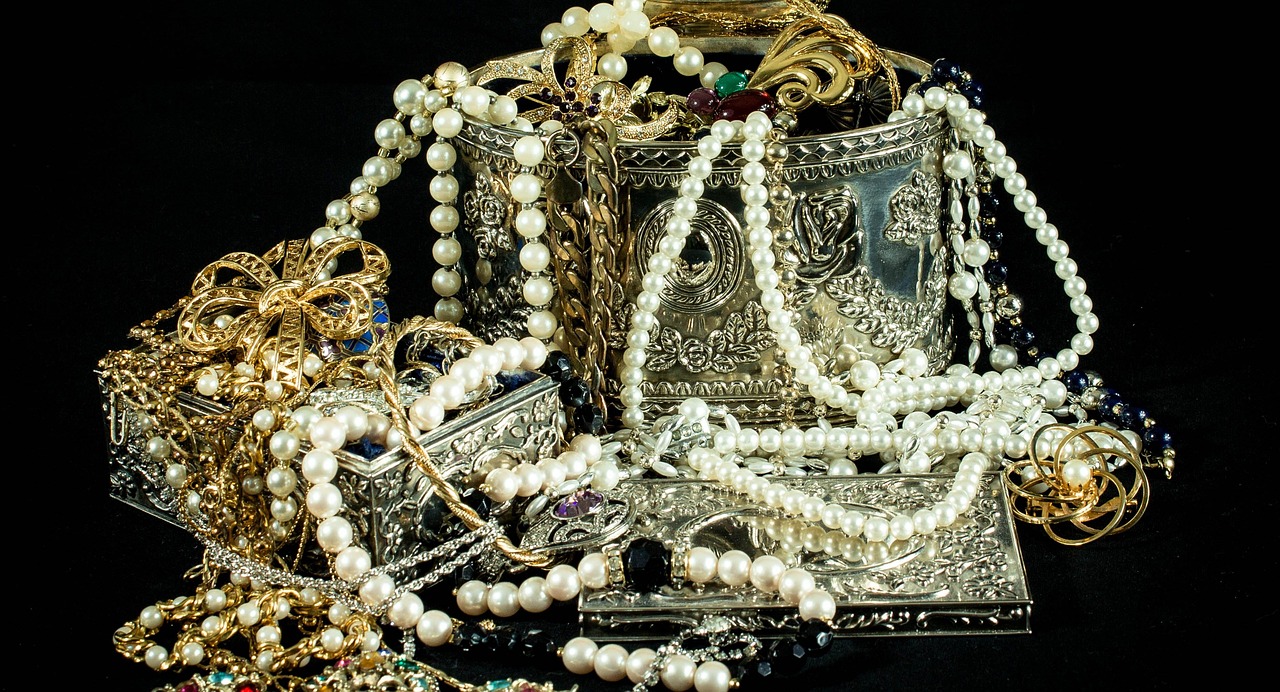
11. Caring for Unique Jewelry Pieces
Caring for unique jewelry pieces is crucial for preserving their beauty and ensuring they last for generations. These treasured items often carry significant sentimental value, making their maintenance a priority for any jewelry owner. Proper care not only enhances their visual appeal but also protects the investment made in these exquisite pieces.
To keep your jewelry looking its best, regular cleaning is essential. Here are some tips:
- Use a soft cloth: Gently wipe your jewelry with a soft, lint-free cloth after wearing it to remove oils and dirt.
- Gentle cleaning solutions: For deeper cleaning, use a mild soap solution and a soft brush. Avoid harsh chemicals that can damage delicate materials.
- Dry thoroughly: Ensure your jewelry is completely dry before storing it to prevent tarnishing and damage.
Proper storage is as important as cleaning. Follow these guidelines:
- Use individual pouches: Store each piece in a separate soft pouch to prevent scratches and tangling.
- Avoid humidity: Keep jewelry in a dry, cool place to minimize tarnishing and deterioration.
- Consider a jewelry box: Use a lined jewelry box with compartments to keep pieces organized and protected.
Sometimes, despite our best efforts, jewelry can become damaged. Here’s when to consult a professional:
- Loose stones: If a gemstone becomes loose, take it to a jeweler immediately to prevent loss.
- Tarnished metals: For heavily tarnished pieces, professional cleaning can restore their original shine.
- Broken clasps or chains: Don’t attempt to fix these yourself; a professional can ensure the repair is done correctly.
By following these care tips, you can ensure that your unique jewelry pieces remain beautiful and cherished for years to come.
11.1 Cleaning and Maintenance Tips
Cleaning and maintaining your jewelry is essential to preserve its beauty and longevity. Different materials and designs require specific care to ensure that each piece remains in excellent condition. Below are some important tips to help you effectively care for your unique jewelry pieces.
- Regular Cleaning: It is important to clean your jewelry regularly to remove dirt, oils, and residues. Use a soft cloth for gentle polishing and a mild soap solution for deeper cleaning. Avoid harsh chemicals that can damage certain materials.
- Storage Solutions: Proper storage is crucial. Store your jewelry in a cool, dry place, ideally in a jewelry box or pouch to prevent scratches and tangling. Separate pieces made from different materials to avoid reactions.
- Material-Specific Care: Different materials require different care methods. For example, gold and silver can be polished, while pearls should be wiped with a soft cloth after wearing to maintain their luster.
- Avoiding Damage: Remove jewelry before engaging in activities that may cause damage, such as exercising, swimming, or cleaning. This helps prevent scratches and exposure to harmful substances.
- Professional Maintenance: For intricate pieces or those with valuable gemstones, consider having them professionally cleaned and inspected periodically. This ensures that any potential issues are addressed before they become significant problems.
In conclusion, proper care and maintenance of your jewelry not only enhances its appearance but also extends its lifespan. By following these tips, you can ensure that your cherished pieces remain beautiful and intact for years to come.
11.2 Repairing Damaged Jewelry: When to Seek Professional Help
When it comes to the care of your precious jewelry, understanding when to seek professional help for repairs is crucial. Jewelry can be delicate, and attempting to fix it yourself may lead to further damage. Here are some key considerations to keep in mind:
- Assess the Damage: Before deciding on repairs, closely examine the piece. If you notice broken clasps, loose stones, or damaged links, it’s time to consult a professional.
- Value of the Piece: If the jewelry is of significant monetary or sentimental value, professional repair is recommended. Experts have the skills to restore it without diminishing its worth.
- Material Considerations: Different materials require specific care. For instance, pearls and opals are softer and can be easily damaged if not handled properly. Professionals know how to treat various materials effectively.
- Complex Repairs: If the repair involves intricate work, such as resetting stones or soldering, it’s best left to a jeweler. They possess the necessary tools and expertise to ensure the job is done right.
- Preventing Further Damage: Addressing repairs promptly can prevent further issues. A small problem can escalate if ignored, leading to more costly repairs down the line.
In conclusion, knowing when to seek professional help for jewelry repairs can save you time, money, and heartache. By entrusting your valuable pieces to skilled artisans, you ensure that they are restored to their original condition, preserving their beauty and significance for years to come.
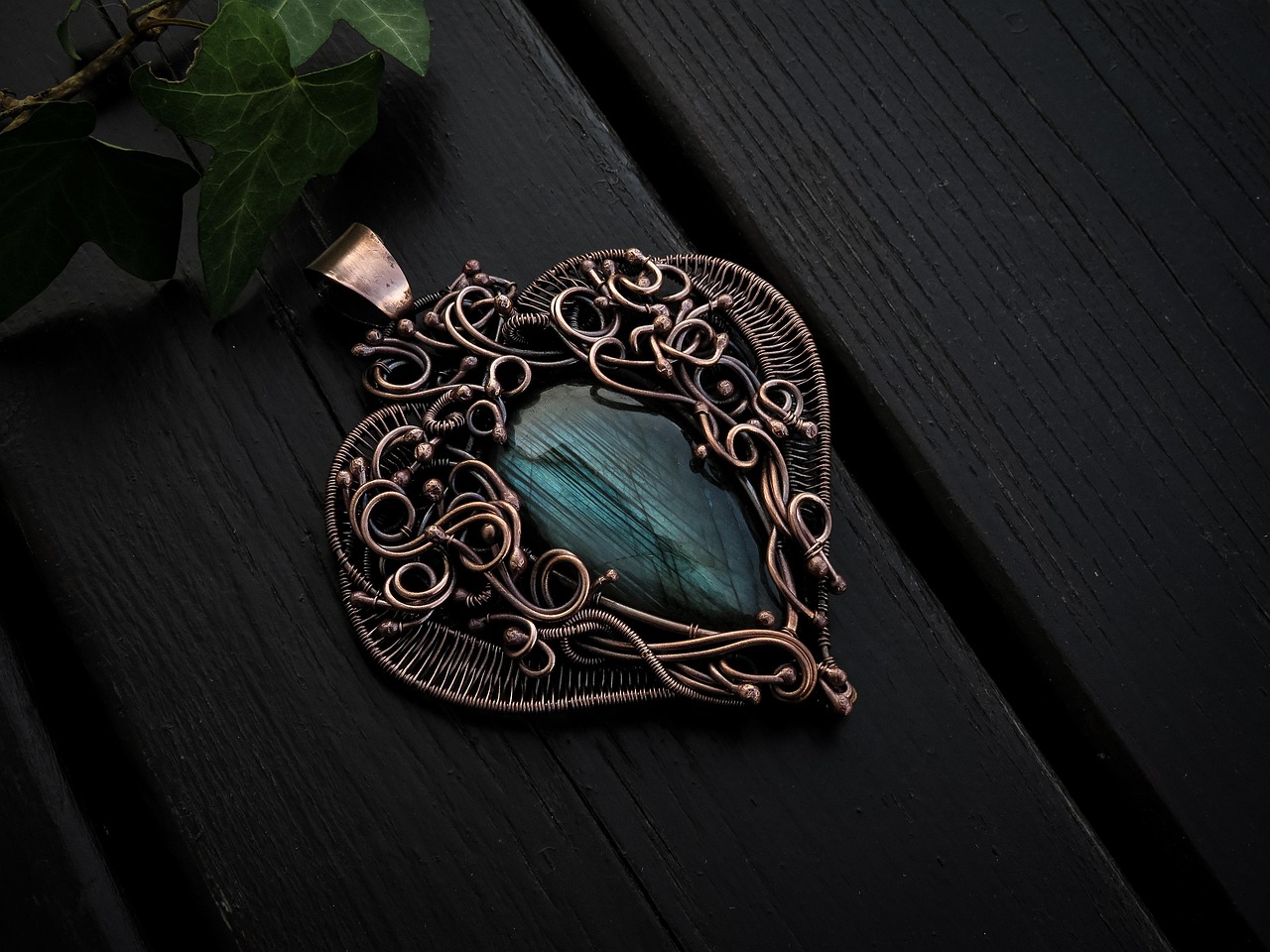
12. Conclusion: The Timeless Appeal of Unique Jewelry
Unique jewelry pieces possess a timeless appeal that resonates across cultures and generations. These pieces are not merely adornments; they are artifacts of history, embodying the rich tapestry of cultural heritage, personal narratives, and artistic expression. Their significance often transcends mere aesthetics, making them treasured possessions that are passed down through families, each piece telling its own story.
Throughout history, jewelry has served various purposes, from symbolizing status and wealth to marking significant life events such as marriages, births, and rites of passage. For instance, in many cultures, the wedding ring symbolizes eternal love, while in others, specific pieces are worn during ceremonies to invoke blessings and protection.
Moreover, the craftsmanship involved in creating unique jewelry pieces is often a reflection of the artistic skills and cultural values of the artisans. Techniques passed down through generations contribute to the uniqueness of each piece, whether it be the intricate beadwork of Native American jewelry or the elaborate goldsmithing of Indian traditions. This craftsmanship not only enhances the beauty of the jewelry but also embeds it with cultural significance.
As society evolves, so does the meaning and appreciation of jewelry. Today, there is a growing trend towards sustainable and ethical jewelry, where consumers seek pieces that not only appeal to their aesthetic sensibilities but also align with their values regarding environmental and social responsibility. This shift emphasizes the importance of knowing the story behind each piece, adding another layer of meaning.
In conclusion, the allure of unique jewelry pieces lies in their ability to connect us to our cultural roots, tell personal stories, and showcase remarkable artistry. As we cherish these pieces, we recognize their role as more than just accessories; they are timeless treasures that celebrate our shared human experience.
Frequently Asked Questions
- What makes jewelry unique across different cultures?
Jewelry’s uniqueness stems from its cultural significance, craftsmanship, and the stories it tells. Each piece reflects the traditions, beliefs, and artistry of its origin, making it a fascinating representation of human history.
- How can I care for my unique jewelry pieces?
To maintain the beauty of your jewelry, regular cleaning is essential. Use a soft cloth and mild soap for gentle cleaning, and store pieces separately to avoid scratches. Always check for specific care instructions based on the materials used.
- What are some popular materials used in traditional jewelry making?
Traditional jewelry often incorporates materials like gold, silver, gemstones, and beads. For instance, ancient Egyptian jewelry favored gold for its divine symbolism, while Native American jewelry prominently features turquoise for its protective qualities.
- How has technology influenced modern jewelry design?
Technology has revolutionized jewelry design through innovations like 3D printing, allowing for intricate and customizable pieces. Additionally, augmented reality enhances the shopping experience, enabling customers to virtually try on jewelry before purchasing.
- What role do celebrities play in shaping jewelry trends?
Celebrities significantly influence jewelry trends by showcasing unique pieces at events and through social media. Their collaborations with designers often lead to exclusive collections that attract attention and drive market demand.

